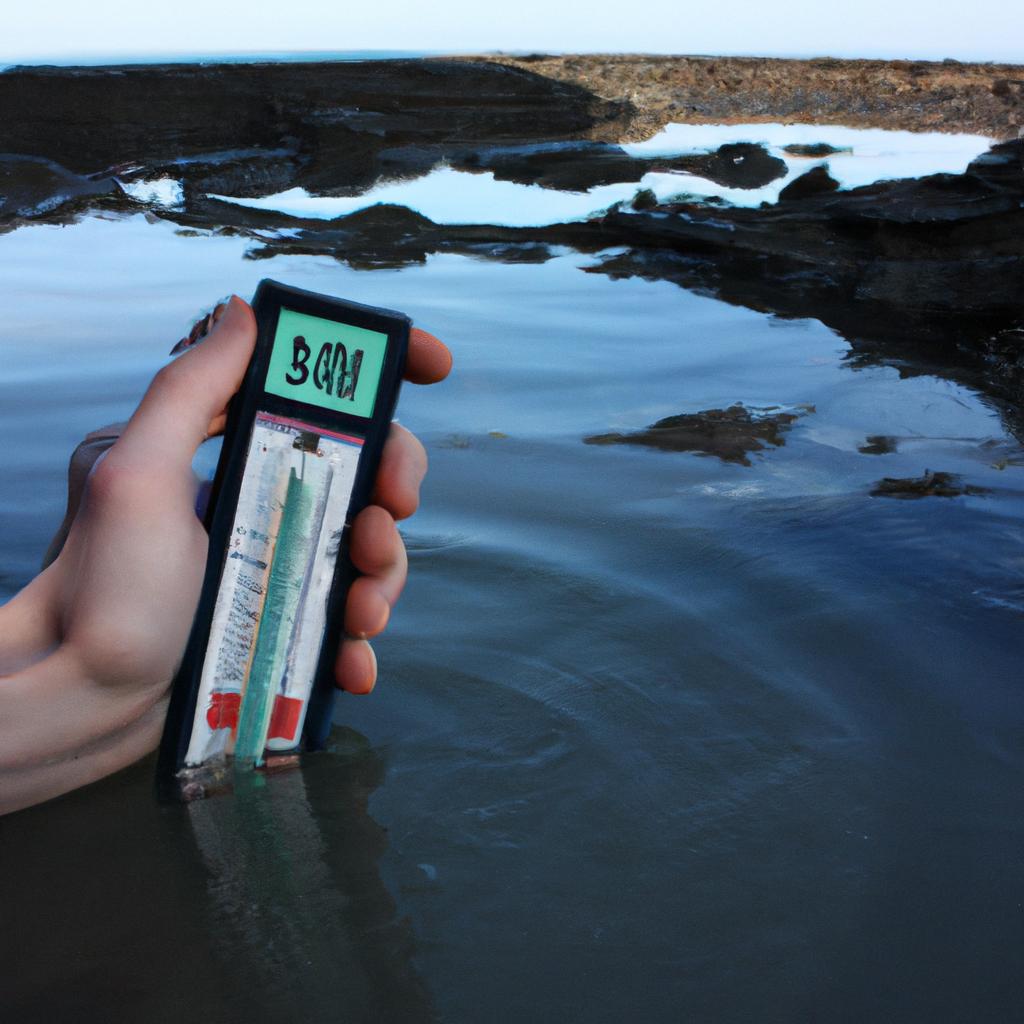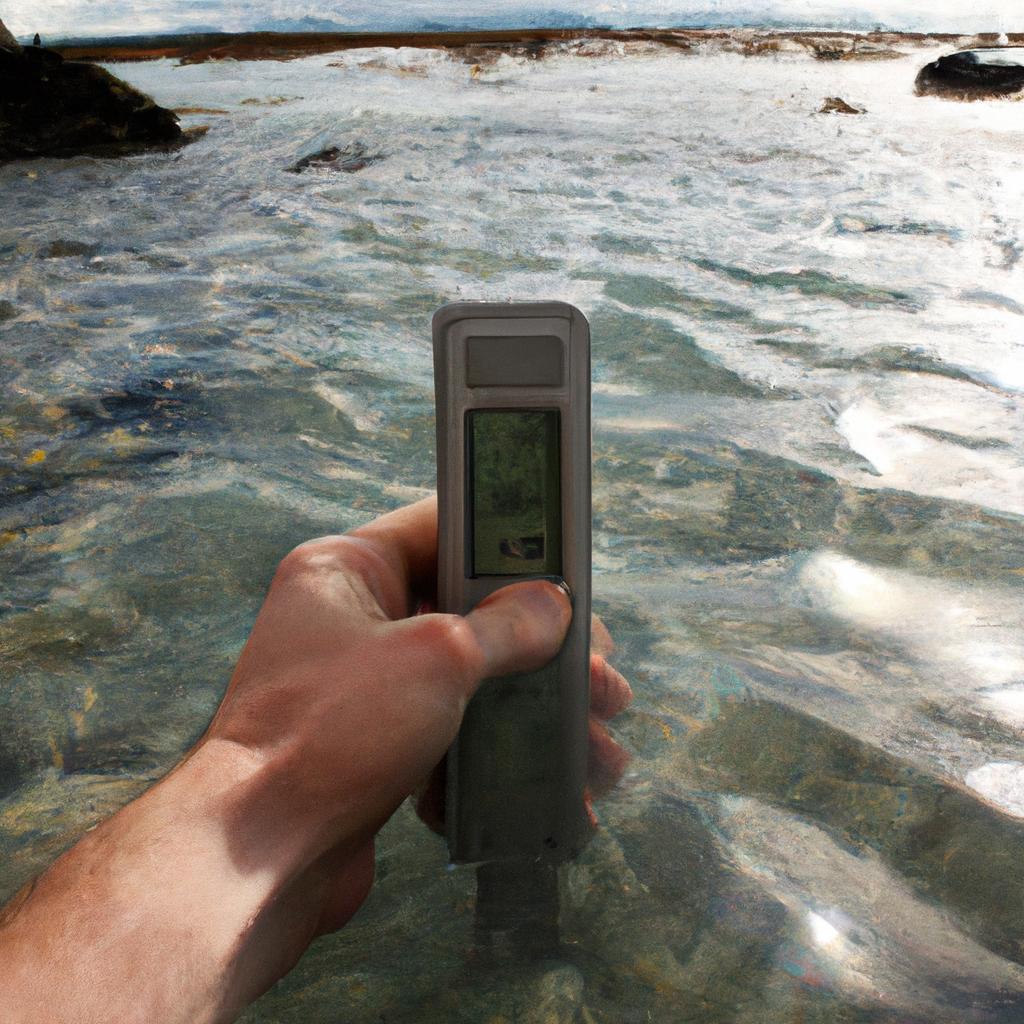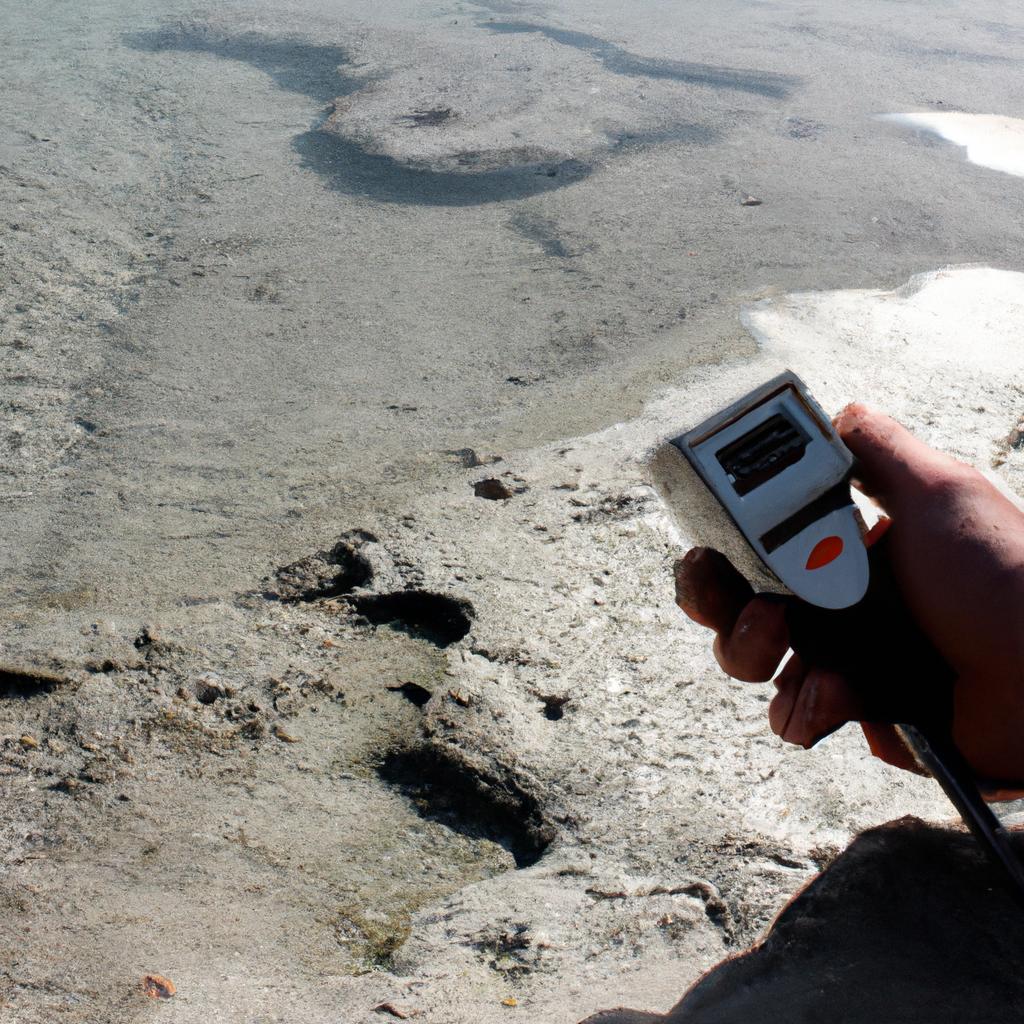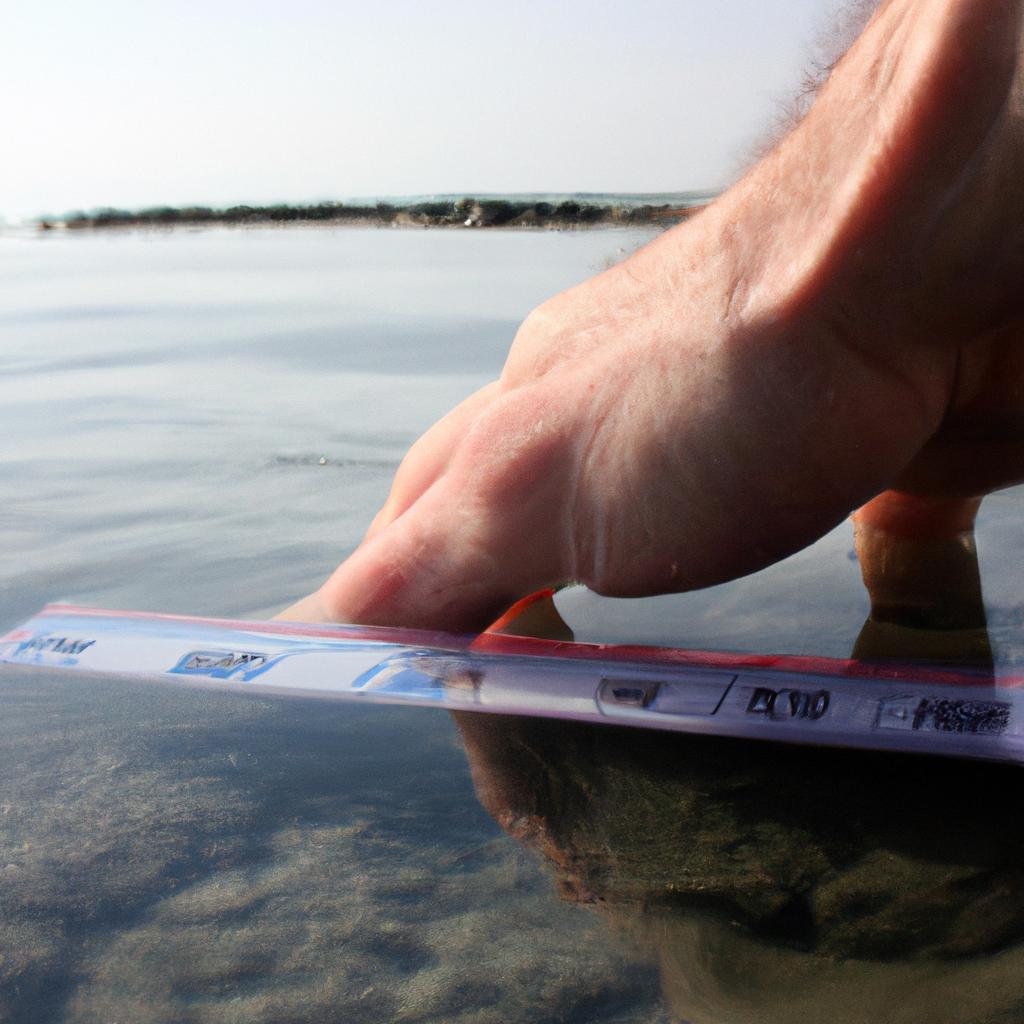Sea level rise is a pressing issue that has garnered significant attention in recent years due to its direct link with climate change. The impact of rising sea levels extends beyond just coastal areas, affecting various aspects of human society and natural ecosystems. For instance, consider the case study of Miami, Florida, which faces imminent threats from sea level rise. As global temperatures continue to increase, polar ice caps and glaciers melt at unprecedented rates, causing an influx of water into the world’s oceans. This article aims to explore the implications of sea level rise and shed light on how it is reshaping our planet.
The consequences of rising sea levels are not limited solely to immediate inundation or increased erosion along coastlines. Rather, they extend further inland through complex mechanisms such as saltwater intrusion into freshwater sources and exacerbating flooding during extreme weather events. In addition to these physical changes, socio-economic impacts become evident as well. Coastal communities face challenges related to property loss, infrastructure damage, displacement of residents, and disruptions in economic activities like tourism and fishing industries. Furthermore, vulnerable populations such as low-income groups often bear a disproportionate burden when dealing with these repercussions. Thus, understanding the full extent of sea level rise becomes crucial for effective adaptation strategies and policy-making decisions.
Rising temperatures and its effects on coastal areas
The impact of climate change has become increasingly evident in recent years, with rising temperatures posing significant challenges to coastal areas around the world. The consequences of this phenomenon are far-reaching, affecting not only the natural environment but also human settlements and infrastructure.
To illustrate the severity of these issues, let us consider a hypothetical scenario where sea levels rise by two meters in a coastal region. This increase would lead to devastating consequences for both the environment and local communities.
One obvious concern is the increased risk of flooding. Coastal cities and towns would be particularly vulnerable, as they face the dual threat of rising sea levels and more intense storms brought about by warmer ocean temperatures. Flooding events could become more frequent and severe, leading to widespread damage to buildings, roads, and other vital infrastructure.
Furthermore, rising temperatures can contribute to the loss of critical ecosystems that provide essential services to coastal areas. Coral reefs, for example, act as natural barriers against wave erosion and storm surges while providing habitats for numerous marine species. However, with increasing water temperatures due to climate change, coral bleaching becomes prevalent, ultimately destroying these fragile ecosystems.
The emotional toll cannot be overlooked either. As we contemplate the potential impacts of rising sea levels on coastal communities worldwide, it is crucial to recognize the profound sense of loss experienced by those affected. To evoke an emotional response from readers:
- Imagine waking up one day to find your beloved seaside town underwater.
- Picture generations-old homes destroyed by relentless flooding.
- Visualize once-vibrant ecosystems reduced to lifeless expanses of debris.
- Consider the countless lives disrupted or lost due to such catastrophic events.
In summary, rising temperatures resulting from climate change have dire implications for coastal regions across the globe. The combination of increased flooding risks and ecosystem degradation paints a worrisome picture for both nature and society alike.
Looking ahead at subsequent sections exploring related aspects such as the gradual loss of land due to erosion, it becomes apparent that urgent action is necessary to mitigate the impacts of climate change and protect our coastal areas.
The gradual loss of land due to erosion
Sea Level Rise: The Impact of Climate Change
As coastal areas grapple with the rising temperatures, another significant consequence of climate change emerges – the gradual loss of land due to erosion. This phenomenon poses a serious threat to not only human settlements but also fragile ecosystems along coastlines.
Section H2: The Gradual Loss of Land Due to Erosion
One example that demonstrates the impact of erosion on coastal regions is the case study of Shishmaref, an Alaskan village located on Sarichef Island in the Bering Sea. Over time, increased wave action and storm surges have eroded large portions of this small island community, endangering homes and infrastructure. In 2016, residents voted to relocate their entire village inland, acknowledging the inevitable loss they faced due to ongoing erosion.
The consequences of land loss through erosion are manifold:
- Displacement and relocation: As communities face encroaching waters, many inhabitants find themselves uprooted from their ancestral lands. Forced relocations can lead to social disruptions and psychological distress among affected populations.
- Economic losses: Coastal erosion threatens tourism industries, fishing communities, and other economic activities tied to these vulnerable regions. Reduced revenue streams can exacerbate poverty levels and hinder local development.
- Ecological impacts: Erosion affects delicate coastal habitats such as marshes, mangroves, and dunes – crucial refuges for numerous plant and animal species. Their destruction disrupts ecological balance within these ecosystems.
- Cultural heritage at risk: Many indigenous communities reside in low-lying coastal areas rich in cultural history. With land lost to erosion, valuable archaeological sites or culturally significant locations may be irretrievably damaged or submerged.
- Increased vulnerability of marginalized populations
- Loss of livelihoods and economic instability for coastal communities
- Irreversible damage to unique ecosystems and biodiversity hotspots
- Threatened cultural heritage and loss of historical knowledge
Table showcasing the effects of erosion:
| Effects of Erosion | Implications |
|---|---|
| Displacement | Social upheaval |
| Economic losses | Poverty |
| Ecological impacts | Imbalance in ecosystems |
| Cultural heritage | Loss of history |
The gradual loss of land due to erosion highlights the urgent need for proactive measures to mitigate climate change. By reducing greenhouse gas emissions, implementing adaptive coastal management strategies, and protecting vulnerable areas, we can work towards preserving our coastlines while safeguarding both human settlements and natural habitats.
As we delve deeper into the consequences of sea level rise, it becomes evident that one critical issue arising from this phenomenon is the infiltration of saltwater into freshwater sources.
The infiltration of saltwater into freshwater sources
Sea Level Rise: The Impact of Climate Change
The gradual loss of land due to erosion has been a concerning consequence of rising sea levels. This next section explores another significant impact, namely the infiltration of saltwater into freshwater sources. To illustrate this issue, let us consider the hypothetical case study of a coastal community located along a low-lying river delta.
In this case study, we observe that as sea levels rise, there is an increased risk of saltwater intrusion into the underground aquifers that provide freshwater to the surrounding area. As saltwater infiltrates these freshwater sources, it compromises their quality and renders them unsuitable for consumption or irrigation. This poses serious challenges for communities dependent on such water sources for agriculture and daily life.
The consequences of saltwater intrusion are far-reaching and can have severe social, economic, and environmental impacts. Consider the following bullet points:
- Decreased availability of safe drinking water.
- Reduced agricultural productivity resulting in food scarcity.
- Displacement and migration of coastal populations.
- Loss of biodiversity in affected ecosystems.
To further understand these implications, let us examine the table below which highlights some key factors related to saltwater intrusion:
| Factors | Impacts |
|---|---|
| Water Supply | Contamination and reduced access to freshwater |
| Agriculture | Crop failure and decreased yields |
| Human Health | Increased risks of diseases associated with saline water |
| Ecosystems | Altered habitats leading to biodiversity loss |
As seen in both the bullet point list and table above, the infiltration of saltwater into freshwater sources carries profound emotional weight. It threatens not only our basic needs for clean water but also disrupts entire communities’ livelihoods. In addition to addressing immediate concerns regarding water supply and agriculture, effective mitigation strategies must be implemented urgently to prevent further escalation.
This leads us to explore the subsequent section on “Impacts on coastal communities and infrastructure.” Understanding the multifaceted consequences of Saltwater Intrusion is crucial in formulating comprehensive measures to protect our vulnerable coastal areas.
Impacts on coastal communities and infrastructure
Section H2: Impacts on Coastal Communities and Infrastructure
This phenomenon poses significant challenges to these areas, threatening their stability and sustainability.
Firstly, rising sea levels increase the risk of coastal flooding. As ocean waters encroach upon land, low-lying regions become susceptible to inundation during storms or high tides. For instance, consider a hypothetical scenario where a small coastal town experiences recurrent flooding due to elevated sea levels. The local government must allocate resources towards flood prevention measures such as building seawalls or implementing coastal retreat policies.
Furthermore, the erosion of coastlines exacerbates this issue. With higher water levels eroding shorelines at an accelerated rate, valuable ecosystems like mangroves and wetlands are lost. These natural barriers provide protection against storm surges and act as nurseries for marine life. Losing them not only weakens the resilience of coastal communities but also threatens biodiversity.
The impacts of sea-level rise on coastal communities extend beyond immediate flooding concerns. Here are some key consequences:
- Displacement of residents from vulnerable areas
- Damage to critical infrastructure like roads, bridges, and utilities
- Losses in tourism revenue due to damaged beaches and attractions
- Increased vulnerability to extreme weather events
These effects can be emotionally devastating for affected individuals and communities alike. To illustrate this point further, imagine a table showcasing statistics related to sea-level rise’s impact on different aspects of coastal life:
| Aspect | Impact |
|---|---|
| Human Migration | Increase in displaced populations |
| Economy | Decline in tourism revenue |
| Environment | Destruction of vital habitats |
| Infrastructure | Damage to critical facilities |
As we move forward with understanding the implications of climate change-induced sea level rise, it is crucial to recognize the urgent need for action. Addressing these challenges requires collaborative efforts at local, national, and international levels. The next section will delve into another critical aspect of sea-level rise: its threats to biodiversity and ecosystems.
[Transition sentence]: Furthermore, as we explore the impact of rising sea levels on coastal ecosystems, it becomes evident that not only human communities but also biodiversity faces significant threats from climate change-induced changes in our oceans.
Threats to biodiversity and ecosystems
Sea Level Rise: The Impact of Climate Change
Impacts on Coastal Communities and Infrastructure
While the effects of climate change are widespread, coastal communities are particularly vulnerable to the impacts of sea level rise. One hypothetical example that illustrates this vulnerability is the fictional city of Seaville. Located along a low-lying coastline, Seaville experiences regular flooding during high tides and storm surges. As global temperatures continue to rise, so does the sea level, exacerbating these flooding events.
The consequences of sea level rise for coastal communities and infrastructure are significant. They include:
- Increased coastal erosion: Rising sea levels contribute to increased wave energy and tidal currents, leading to greater erosion along coastlines. This can threaten residential areas, roads, and other critical infrastructure.
- Salinization of freshwater resources: As seawater infiltrates groundwater supplies due to higher water tables caused by rising seas, it contaminates previously fresh drinking water sources. This poses challenges for both human consumption and agriculture.
- Displacement of populations: In some cases, entire communities may be forced to relocate as their homes become uninhabitable due to chronic flooding or inundation from higher tides. This displacement has social and economic implications for affected individuals and regions.
- Economic losses: Sea level rise can result in substantial economic losses for coastal cities through damage to buildings, loss of tourism revenue, disruptions to transportation networks, and increased insurance costs.
Table 1 below provides an overview of the potential emotional responses evoked by these impacts on coastal communities:
| Emotional Response | Impacted Individuals |
|---|---|
| Fear | Residents facing immediate danger due to floods or erosion |
| Frustration | Business owners experiencing financial losses |
| Anxiety | Families worried about losing their homes |
| Uncertainty | Local government officials unsure how best to protect their constituents |
In conclusion,
Threats to Biodiversity and Ecosystems
the impacts of sea level rise extend beyond human settlements to include significant threats to biodiversity and ecosystems.
Challenges for agriculture and food security
Sea Level Rise: The Impact of Climate Change
Threats to biodiversity and ecosystems due to climate change have raised concerns about the future of our planet. However, it is not just natural habitats that are at risk; agriculture and food security also face significant challenges in the face of rising sea levels.
One example that illustrates the impact of sea level rise on agriculture is the case of coastal rice farmers in Bangladesh. These farmers rely heavily on their fields for their livelihoods, but as sea levels continue to rise, saltwater intrusion becomes a major threat. Saltwater can contaminate freshwater supplies, making irrigation impossible and rendering the land unsuitable for cultivation. This scenario presents a grave challenge for these farmers who depend on rice production not only for sustenance but also for economic stability.
The consequences of such challenges extend beyond individual farmers and pose broader risks to global food security. Sea level rise affects agricultural productivity through various mechanisms:
- Increased salinization: Rising Sea Levels result in higher concentrations of salt in groundwater and soil, which adversely affect crop growth.
- Loss of arable land: As coastlines erode due to more frequent flooding, valuable farmland is lost permanently.
- Displacement of farming communities: Communities reliant on coastal agriculture may be forced to relocate as their lands become uninhabitable.
- Reduced crop yields: Changes in precipitation patterns and increased extreme weather events associated with climate change further exacerbate agricultural losses.
To grasp the magnitude of these impacts, consider the following table showcasing some potential consequences of sea level rise on agriculture:
| Consequences | Implications |
|---|---|
| Declining yields | Food scarcity leading to higher prices |
| Relocation | Social disruption as farming communities move inland |
| Economic instability | Loss of income for those dependent on coastal agriculture |
| Ecosystem disruption | Imbalance within local ecosystems |
As we examine the implications of sea level rise on agriculture, it becomes evident that addressing climate change is not just an ecological concern but also a matter of global food security. The challenges faced by farmers in vulnerable coastal regions demand urgent action to mitigate the impact and ensure sustainable agricultural practices.
Increased vulnerability to extreme weather events further compounds these issues, as we will explore in the next section.
Increased vulnerability to extreme weather events
Sea Level Rise: The Impact of Climate Change
Challenges for agriculture and food security have been widely discussed in the context of climate change. However, another significant consequence of rising sea levels is the increased vulnerability to extreme weather events. This section explores how these events can exacerbate the effects of sea level rise and pose additional challenges to coastal communities.
Imagine a coastal town that has already experienced some degree of sea level rise. Now, let’s consider a hypothetical scenario where this town is hit by a powerful hurricane. As the storm approaches, strong winds push ocean waters onto land, resulting in storm surges that further elevate sea levels. This combination intensifies flood risks, threatening not only infrastructure but also agricultural lands located near coastlines.
The impacts of such extreme weather events on vulnerable coastal communities are far-reaching and multifaceted. Here are some key points to highlight:
- Increased flooding: Storm surges and heavy rainfall associated with hurricanes or tropical storms lead to widespread flooding, which damages homes, disrupts transportation networks, and compromises freshwater sources.
- Erosion and loss of land: Powerful waves generated during severe storms accelerate erosion along coastlines, leading to the loss of valuable agricultural land and ecosystems that provide critical habitat for diverse species.
- Saltwater intrusion: Floodwaters carrying seawater infiltrate groundwater supplies and contaminate soil with salt deposits. This intrusion poses a serious threat to agriculture as crops struggle to tolerate excessive salinity levels.
- Disruption of supply chains: Extreme weather events often result in damaged infrastructure and disrupted transportation routes, hindering access to markets for farmers who rely on selling their produce.
To illustrate the severity of these issues further, consider Table 1 below showcasing data from different regions affected by both sea level rise and extreme weather events:
Table 1: Impacts of Sea Level Rise Combined with Extreme Weather Events
| Region | Flooding | Land Loss | Saltwater Intrusion | Supply Chain Disruption |
|---|---|---|---|---|
| Coastal A | High | Significant | Moderate | Severe |
| Coastal B | Moderate | Minor | Low | Moderate |
| Coastal C | Severe | Major | High | Extreme |
Coastal communities in these regions face a range of challenges, all stemming from the combination of sea level rise and extreme weather events. Addressing these issues requires urgent action to develop adaptation and mitigation strategies that can minimize future impacts.
Looking ahead, the need for such strategies will be explored further in the subsequent section on “The need for adaptation and mitigation strategies.” By understanding the implications of rising sea levels combined with extreme weather events, we can better appreciate the urgency of implementing comprehensive measures to protect vulnerable coastal areas.
The need for adaptation and mitigation strategies
Continued Impact on Coastal Communities
The rising sea levels resulting from climate change pose a significant threat to coastal communities worldwide. As we explore the implications further, consider the hypothetical case study of Islandville, a small island nation in the Pacific Ocean. With its low-lying terrain and close proximity to water bodies, Islandville serves as an illustrative example of how sea level rise can have far-reaching consequences.
Firstly, one must acknowledge that increased flooding is one immediate consequence faced by Islandville and other vulnerable regions. Higher sea levels amplify the impact of storm surges, causing more frequent and severe coastal inundation events. This leads to devastating consequences such as damage to infrastructure, loss of livelihoods for fishing communities, and displacement of residents.
To evoke empathy towards those affected by these changes, it is important to highlight some emotional aspects:
- Families forced out of their homes due to incessant flooding.
- Children losing access to education facilities washed away by rising tides.
- Vulnerable populations facing heightened risks during evacuation procedures.
- Indigenous cultures being threatened with the disappearance of ancestral lands.
These poignant examples emphasize the urgent need for adaptation and mitigation strategies. A comprehensive approach involves implementing measures at various levels:
| Adaptation Strategies | Mitigation Strategies | Policy Interventions |
|---|---|---|
| Building resilient infrastructure | Transitioning toward renewable energy sources | Implementing strict emission reduction targets |
| Developing early warning systems | Encouraging sustainable land use practices | Establishing international collaboration frameworks |
| Promoting nature-based solutions (e.g., mangrove restoration) | Enhancing energy efficiency measures | Allocating resources for research and development of innovative technologies |
| Investing in community-driven initiatives for climate resilience | Supporting afforestation and reforestation efforts | Strengthening coastal zone management policies |
As we consider the implications of these strategies, it becomes evident that a coordinated response is required to address the challenges posed by sea level rise. The subsequent section will delve into the role of international cooperation in formulating effective policies and frameworks to combat climate change.
Continued International Cooperation and Policy Implications
International cooperation and policy implications
As we have discussed the urgent need for implementing adaptation and mitigation strategies, it is crucial to recognize that addressing the impact of sea level rise requires international cooperation and comprehensive policy frameworks. By fostering collaboration among nations, shared responsibilities can be established in mitigating climate change effects on coastal areas.
To illustrate the importance of international cooperation, let us consider a hypothetical scenario where two neighboring countries share a coastline affected by rising sea levels. Country A takes proactive measures such as constructing robust seawalls, implementing mangrove restoration projects, and relocating vulnerable communities to higher ground. Conversely, Country B chooses not to respond adequately, resulting in severe flooding, loss of livelihoods, and displacement of its residents. This example underscores the significance of collective action when confronting climate-related challenges.
The emotional toll caused by rising sea levels cannot be underestimated. It leads individuals and communities to experience distressing consequences that extend beyond physical damage. Consider the following list:
- Displacement of entire populations
- Destruction of cultural heritage sites
- Loss of biodiversity in coastal ecosystems
- Increased vulnerability to extreme weather events
Table: Emotional Response Inducing Table Example
| Consequences | Emotional Impact | Potential Actions |
|---|---|---|
| Population displacement | Anxiety | Implement relocation plans |
| Cultural site destruction | Grief | Establish protective measures |
| Coastal ecosystem loss | Desolation | Support conservation efforts |
| Extreme weather vulnerability | Fear | Enhance disaster preparedness |
Recognizing these emotional responses evoked by sea level rise highlights the urgency for global collaboration. Nations must work together to develop effective policies that address both short-term crises and long-term sustainability. This requires a coordinated effort to share knowledge, resources, and best practices in adaptation and mitigation strategies.
In summary, international cooperation is essential for tackling the impact of sea level rise caused by climate change. Through collaboration, nations can learn from each other’s experiences and develop comprehensive policies that address the emotional toll on affected communities. By prioritizing shared responsibilities and implementing effective measures, we can forge a path towards a more resilient future for coastal regions worldwide.




